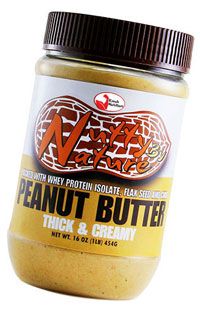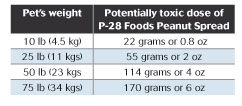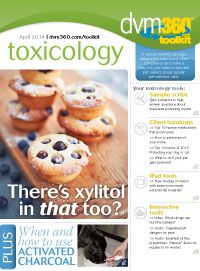Xylitol now found in certain peanut and nut butters
Natural sweetener known to cause hypoglycemia and hepatic necrosis in dogs.

Krush Nutrition's "Nutty by Nature" xylitol-containing peanut butter. Xylitol, a natural sugar alcohol sweetener popular for its low glycemic index but known to cause hypoglycemia and hepatic necrosis in dogs, is now also found in several specialty peanut and nut butter brands. Nuts ‘n More, Krush Nutrition and P-28 Foods all make peanut butter and nut-based spreads containing the ingredient.
Though xylitol has been popping up in all kinds of foods and dental products in the last several years, peanut butter is a special concern, says Ahna Brutlag, DVM, MS, DABT, DABVT, associate director of veterinary services for Pet Poison Helpline and SafetyCall International. “First, dogs fed straight peanut butter as a treat or fed treats baked with xylitol-containing peanut butter may certainly be at risk for harm,” she says. “Second, a dog that nabs the entire jar of xylitol-containing peanut butter and happily gorges on his or her treasure without anyone knowing could quickly become extremely ill. If this occurred during the day while the owners were not home, it's possible the dog could die before people returned.”

So far, mainstream peanut butter brands haven't started using xylitol-only the three specialty brands include it in their formulations. Because toxicity is based on the amount ingested, it's helpful to know the concentration of xylitol found in these products. But at press time, only P-28 Foods had released its concentration information to Pet Poison Helpline. Based on the information from P-28, Brutlag created the chart below to help owners understand how much of the spread was safe to give a dog based on its weight.
Brutlag is urging pet owners to be vigilant about checking labels and looking for keywords that can indicate that a food contains xylitol. “The most obvious thing to look for is the word ‘xylitol' itself. It may be prefaced or followed by clarifying words,” she says.
In some cases, xylitol's position on the ingredient list can be helpful in estimating its quantity in the product. “In the United States, food products must list their ingredients in descending order of predominance by weight. This means that the ingredient that weighs the most is listed first, and the ingredient that weighs the least is listed last,” Brutlag says.

The toxicology toolkit
Use these free tools to train your team and educate clients about common pet toxins and the importance of keeping pets safe. Get the tools.
Something else to check is whether the packaging says “sweetened naturally” or that it uses a “natural sweetener.” Brutlag says, “It's a common misconception that xylitol is an artificial sweetener-but it's not. It's normally found in small amounts in fruits and vegetables, so if you see those terms, look deeper to see if xylitol is listed. Chemically, xylitol is classified as a sugar alcohol, so this is another phrase to look for.”
Other sugar alcohols, such as erythritol, glycerol (also called glycerine), maltitol, mannitol and sorbitol are not known to be toxic to dogs; however, some food labels do not list the specific sugar alcohol used. “When in doubt, if you want to feed a product to your dog that lists ‘sugar alcohol' as an ingredient, but doesn't list which one, don't use it,” Brutlag advises. Because xylitol and other sugar alcohols are not technically sugar, they may also be found in products labeled “sugar free” or “no sugar added.”
While it seems unlikely that xylitol will become so mainstream that it begins to replace sugar in most foods, it's very likely that more products will contain it, which Brutlag says has been the trend for several years.
FDA approves oral drug for broad canine protection against parasites
October 7th 2024Elanco's lotilaner, moxidectin, praziquantel, and pyrantel chewable tablets (Credelio Quattro) provide a single monthly dose for protection against fleas, ticks, heartworms, roundworms, hookworms, and 3 species of tapeworm.
Read More
dvm360 announces winners of the Veterinary Heroes program
Published: September 6th 2024 | Updated: November 5th 2024This year’s event is supported by corporate sponsor Schwarzman Animal Medical Center and category sponsors Blue Buffalo Natural, MedVet, Banfield Pet Hospital, Thrive Pet Healthcare and PRN Pharmacal.
Read More